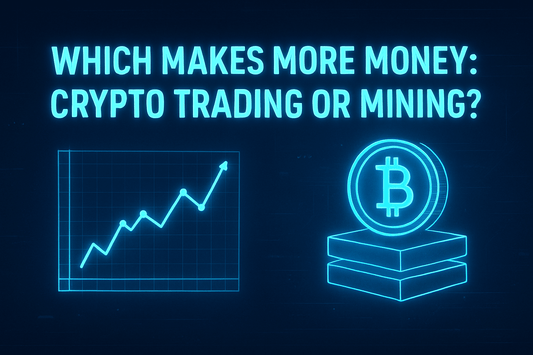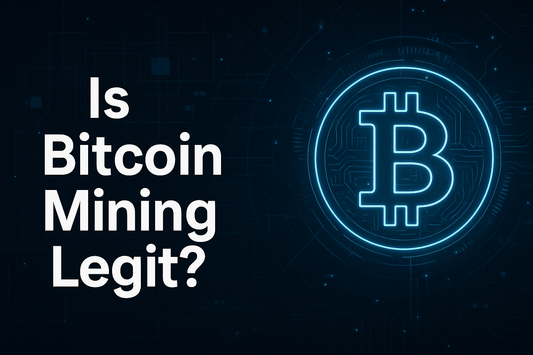This article provides a comprehensive overview of the evolution of Bitcoin mining, covering the initial stages of CPU and GPU mining, the contributions of Satoshi Nakamoto, the changes in mining rewards, and the halving mechanism. It helps readers understand the technological advancements and economic principles behind Bitcoin mining over time.
Introduction
Bitcoin mining plays a crucial role in securing the Bitcoin network and validating transactions. By solving complex mathematical puzzles, miners add new blocks to the blockchain, ensuring the integrity and decentralization of the system. Understanding the history of Bitcoin mining helps us appreciate the technological and economic evolution behind this revolutionary digital currency.
The Beginning of Bitcoin Mining: CPU Mining
When Satoshi Nakamoto released the Bitcoin whitepaper and mined the genesis block in 2009, mining was performed using ordinary computer CPUs. At this early stage, the mining difficulty was very low, allowing individual users with standard computers to participate in the mining process easily. The motivation for early miners was not necessarily profit but to support and test the new network. CPU mining marked the humble beginnings of Bitcoin’s decentralized network.
The Rise of GPU Mining
As Bitcoin gained popularity, the increasing mining difficulty made it difficult for CPUs to compete efficiently. Graphics Processing Units (GPUs), originally designed for rendering images and video, proved to be much more effective at performing the repetitive calculations required for mining due to their parallel processing capabilities. This led to a shift where miners began using GPUs to accelerate mining operations significantly. The transition to GPU mining increased the network’s overall hash rate and raised the barrier to entry, causing many casual miners with only CPUs to gradually exit the mining ecosystem.
The Arrival of the ASIC Era
The introduction of Application-Specific Integrated Circuits (ASICs) revolutionized Bitcoin mining. ASICs are specialized hardware designed solely for mining cryptocurrencies, providing vastly superior efficiency and computing power compared to CPUs and GPUs. This technological leap significantly increased the mining network’s hash rate and made mining far more competitive and industrialized. As a result, mining gradually became concentrated in large-scale operations with access to cheap electricity and advanced equipment, leading to increased centralization concerns within the Bitcoin community.
Bitcoin’s Mining Quantity and Issuance Rules
Bitcoin was designed with a fixed total supply of 21 million coins to ensure scarcity and prevent inflation. The issuance of new bitcoins happens through mining rewards, which miners receive for successfully adding new blocks to the blockchain. Initially, the block reward was 50 bitcoins per block, but this reward decreases over time following a predetermined schedule. This issuance rule controls the rate at which new bitcoins enter circulation, balancing supply with network security incentives.
Understanding the Halving Mechanism
The Bitcoin halving, or “halving” event, occurs approximately every four years (every 210,000 blocks) and cuts the block reward miners receive by 50%. This mechanism is built into Bitcoin’s protocol to control inflation and gradually reduce the supply of new bitcoins over time. Each halving reduces the number of new bitcoins entering circulation, which tends to increase scarcity and has historically influenced the market price of Bitcoin. The halving events also impact miners’ profitability, pushing them to improve efficiency or exit the network if mining becomes unprofitable.
Future Outlook
Bitcoin mining technology continues to evolve, with ongoing innovations aimed at improving energy efficiency and reducing environmental impact. Emerging developments such as more efficient ASIC designs and renewable energy integration are shaping the future of mining. Additionally, the role of mining in the broader Bitcoin ecosystem may change as the block reward decreases and transaction fees become a larger incentive for miners. Sustainable and decentralized mining remains a key focus to ensure the long-term security and viability of the Bitcoin network.
Conclusion
Bitcoin mining has undergone a remarkable evolution from its early days of CPU mining to the specialized ASIC era, reflecting both technological progress and economic incentives. The halving mechanism plays a critical role in maintaining Bitcoin’s scarcity and value over time. As mining technology advances and environmental concerns grow, the Bitcoin community continues to seek sustainable and efficient solutions. Understanding this history offers valuable insight into how Bitcoin’s decentralized network remains secure and robust in a constantly changing landscape.




